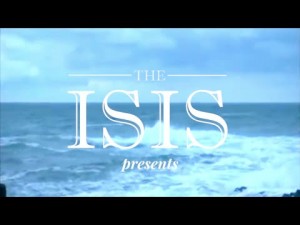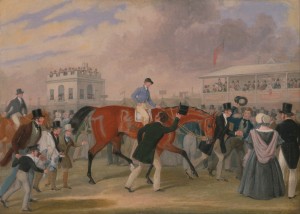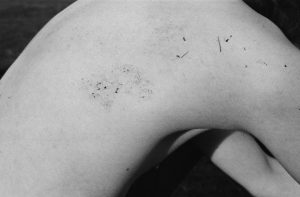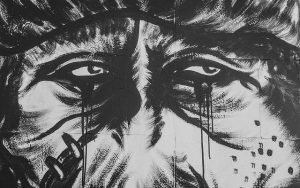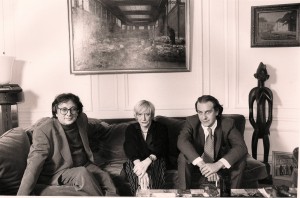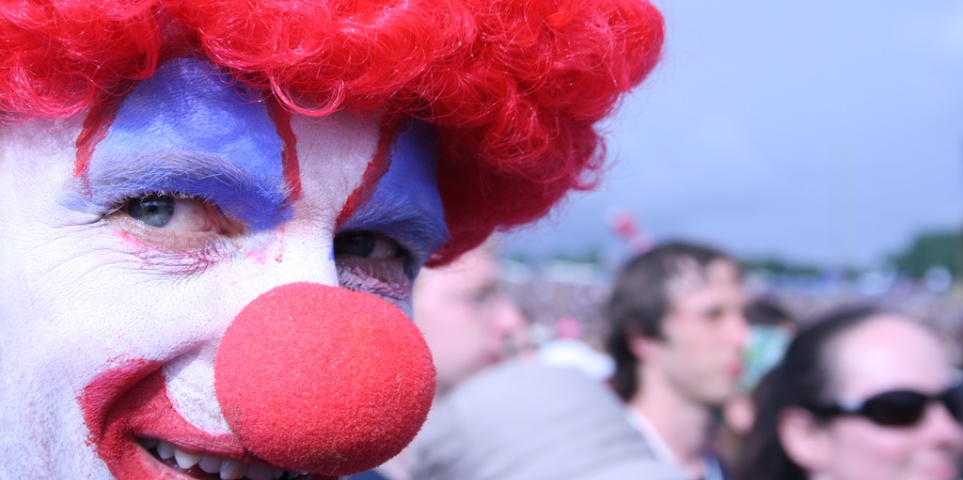
Stuck! Stuck! Stuck!
by Joanna Kozłowska | August 24, 2011
“God died in western art sometime during The First World War. It was good fun knocking him off his high horse, but watching the art brats of today kick him whilst he’s down is somehow less amusing”, two British artists, Billy Childish and Charles Thomson, wrote to the director of the Tate Gallery in an open letter in early 2000. These were only the first shots fired by their art group, the Stuckists, in a battle against the “British art establishment”. Much was ahead: clowns demonstrating against the Turner Prize, media spotlight and the proclamation of a new, “Remodernist” era in world culture. Everything began with a certain insult.
In 1987, both Childish and Thomson belonged to a performance group called the Medway Poets, where they met Tracey Emin who would eventually become a star of British conceptual art, shooting to fame as the author of ‘My Bed’, an installation consisting of a bed stained with bodily secretions. Their artistic visions soon proved incompatible. Emin’s dismissal of Childish’s traditional artwork (‘you’re stuck! stuck! stuck!’) eventually gave the name to an international movement of over 200 groups in 50 countries, seeking to promote figurative painting in opposition to conceptual art.
With artists like Emin going on to become Turner Prize nominees, it wasn’t surprising that Stuckist ire soon turned toward the UK’s most publicized art award. “The only artist who wouldn’t be in danger of winning the Turner prize is Turner”, Childish and Thomson stated in a manifesto. “To our knowledge, Turner did not pickle sheep or construct concrete casts of negative space. It should be noted what he actually did was painting pictures.”
“The only artist who wouldn’t be in danger of winning the Turner prize is Turner”
In 2000, the group first demonstrated during the prize ceremony, in slightly unconventional attire. A written statement from the Tate, secured by Stuckist leaders, officially declared “barrister’s wigs and gowns, Napoleonic military uniforms, gorilla suits and clown costumes” permissible dress for admission. Since then, Stuckist protests have become a familiar sight. The group also staged concurrent shows (The Real Turner Prize Show) in the UK, Germany and Austria. Their Art Clown of the Year prize (a custard pie, which the winner is expected to purchase and administer upon themselves) was soon awarded to the Tate director Sir Nicholas Serota.
The Stuckists did not stop at denouncing modern art. Their manifestos underlined the links between art and “spirituality”, figurative painting as a way towards the artist’s self-discovery “without the [Post-Modern] restraints of the ironic, the cynical or the didactic.”
Serota’s reply to the Remodernist challenge was quite straightforward. “Thank you for your open letter. You will not be surprised to learn that I have no comment to make on your letter, or your manifesto.” Yet the idea was there to stay: in 2008 a London Evening Standard critic applied the term to three Turner Prize nominees. Remodernist groups popped up in film and photography as well. Another fashionable ism? According to its adherents, quite the contrary. “Remodernism,” as Alex Kapranos of Franz Ferdinand put it, “is simply having the gall to suggest that artists can have souls”.
